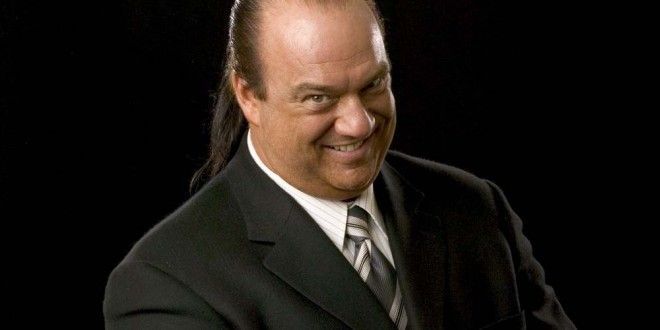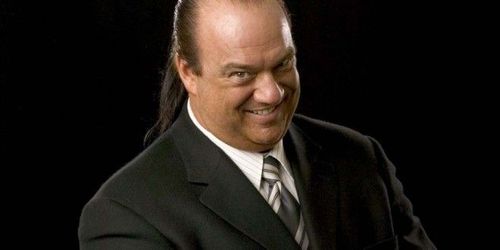
Why Did Paul Heyman leave WWE in 2006?

During the first half of the 2000s, Paul Heyman was one of WWE’s most important people, both on-screen and off. Not only did he serve multiple on-screen roles (commentator, SmackDown GM, Brock Lesnar’s manager and mouthpiece), but he was also a major creative force on SmackDown for a time as well.
He was the head booker for the blue brand for some time (the same role Road Dogg has now), and worked in various creative capacities in the company after his stint as GM came to an end.
However, all of his hard work ended in 2006, and he left the company for six years, after he had seemingly disappeared overnight. So what happened to Paul Heyman?
Creative work
Between mid-2002 and late 2006, Paul Heyman spent most of his time as a member of WWE’s creative team. After the first brand extension, RAW and SmackDown ended up with two completely different crews.
Not only did each show have its own roster, but the creative teams and backstage staff were also different, with Vince McMahon and a select few others being the only ones common to both brands. During the initial phase of the Brand Extension, Stephanie McMahon was the creative head of RAW while Paul Heyman was in charge of SmackDown.
While RAW under Stephanie became more of a story and drama-driven show, SmackDown under Heyman became ‘the wrestling show’. SmackDown was centered far more on action and athletics, and as the unofficial ‘B’ show, it was meant to showcase lesser stars than those on RAW and to act as a launching pad for WWE’s future stars.
Guys like John Cena, Brock Lesnar, and the SmackDown Six (Eddy, Chavo, Edge, Benoit, Angle and Mysterio), were put in important spots on SmackDown throughout 2002 and into 2003, and SmackDown became arguably the more popular of the two brands.
With Paul as the creative genius leading the way, SmackDown enjoyed what many consider its greatest run, which lasted until Paul Heyman’s time as head booker came to an end.
Heyman’s time as SmackDown’s top creative mind ended some time in mid-2004, and his creative influence gradually waned. No one is certain why, but rumors circulating at the time suggested that Stephanie McMahon was incredibly jealous of SmackDown’s success at the time, especially since it was beating RAW – the show she was running – in virtually every metric. There are also those who’ve suggested that Heyman clashed with other creative minds on many occasions, which eventually led to his demotion.
That said, Heyman did work in a creative capacity in many other places, including in WWE’s then-developmental territory OVW, which is where he encountered CM Punk for the first time.
In 2005 and 2006, WWE enjoyed some success with two PPVs they ran in the spring: ECW One Night Stand. The 2005 version was a runaway success, due in part to Paul’s involvement and the well-booked ‘WWE Invaders’ composed of anti-ECW wrestlers.
The 2006 version wasn’t bad, although it is remembered more for the absolutely vicious crowd than for any great moments or matches (Rob Van Dam’s WWE Championship win notwithstanding). The success of these two events behooved Vince McMahon to not only continue promoting ECW-centric shows, but to create an entire third brand, which has come to be known as WWECW.
Unfortunately, this revived ECW was nothing like its original predecessor. Because of WWE’s own creative desires, this new brand lacked many of the elements that made the original great. Hardcore elements felt ‘toned down’, the atmosphere was more ‘WWE-esque’ and the roster itself was composed more of lesser WWE stars than actual new stars.
Many in WWE felt that being drafted to ECW was something of a demotion, as the brand had significantly less time and energy devoted to it than any other brand.
The event
Although Paul Heyman did his best to salvage WWECW in any way he could, he simply couldn’t convince Vince McMahon to see things from Paul’s perspective. These problems culminated in the booking of quite possible the single-worst WWE PPV of all time: December to Dismember.
The 2006 edition of this event was mired by poor promotion, uninspiring match-ups, and a fierce argument over the creative direction of the show’s main event, the Extreme Elimination Chamber.
After the show ended, Paul Heyman had another major confrontation with Vince McMahon after Vince tried to blame the failure of the PPV on Heyman, which was posted on WWE’s website. The creative handling of the show was so bad that Paul left WWE entirely shortly afterwards, and wouldn’t return until May 2012.
For those who do not recall, December to Dismember had only two matches that were actively promoted, with the remaining four being completely unannounced (already a bad sign). Much of the undercard was altogether forgettable, with nothing of interest happening in any of those matches. But the real disappointment (for both the fans and Paul Heyman) was the main event.
The Extreme Elimination Chamber was composed of the following wrestlers: CM Punk, Test, Rob Van Dam, Hardcore Holly, Bobby Lashley, and then-ECW World Champion the Big Show. ECW original Sabu was supposed to be in it, but he was replaced by Hardcore Holly on the eve of the show.
The reported reason for this was that Sabu had enormous backstage heat with WWE officials, which culminated in a cheesy storyline that Sabu had been attacked backstage, thus being incapable of participating. Although that in itself was disappointing to any ECW diehard hoping for an actual hardcore bloodbath, the actual match was even worse when you consider the other participants.
Hardcore Holly was a mainstay of WWE’s lower card, with the only hardcore thing about him (at least at the time) being his name. both Test and Bobby Lashley were ‘Vince-types’, i.e. big muscular guys that Vince McMahon always loved to push (and still does to this day). Neither of them were considered ‘ECW’-style, and represented more of WWE’s attempt to replace the image of the old ECW with their own.
Then you had Rob Van Dam, a true ECW legend whose time at the top was cut short by a myriad of issues, including his infamous arrest as WWE Champion. The champion, Big Show, wasn’t known for being much of a hardcore guy, but he was something of a loyalist to Vince, and this run as champion was something of a reward for him (ironically, he would leave WWE for over a year after this to recover from injuries and the physical and mental toll WWE had taken on him up to that point).
The sixth and final man was CM Punk, the man that was anathema to everything Bobby Lashley and Test represented. He was skinny, covered in tattoos, practices Muay Thay and had made a name for himself on ‘the indies’. He was also an up-and-coming rookie that the ECW audience loved and cheered for.
In the actual match, CM Punk was the first one eliminated, without scoring a single elimination of his own. Test then eliminated both Hardcore Holly and Rob Van Dam, the latter being the one to eliminate Punk. Lashley then entered and eliminated Test, which set up the confrontation between (supposed) babyface conqueror Lashley and the monster heel Big Show.
This was a classic Vince McMahon-booked match, and the boss himself was adamant about this being the decision.
Paul Heyman, however, had other ideas, and argued with Vince many times about changing the finish of the match. In a 2008 interview, Heyman explained how he wanted the match to go. Instead of Lashley being crowned victor, Heyman wanted Punk to win the title.
Furthermore, Heyman wanted Punk to beat Big Show in quick fashion early into the match, which would’ve elevated Punk. Big Show himself actually liked this idea a lot and supported Heyman’s proposal to lose early to make Punk into a bigger star.
However, Vince McMahon stubbornly dug in his heels and refused to change his mind, insisting that Lashley be the one to win, even as Heyman warned him throughout the night leading up to the show that the fans would reject this decision.
It was this creative argument that led to Heyman leaving WWE. He had done his best to take the WWECW brand in a different direction, but he was hampered by Vince McMahon’s stubbornness and unwillingness to try something different. Heyman has since returned to WWE, but it’s unlikely that he has any creative influence outside of his own promos and managing Brock Lesnar.